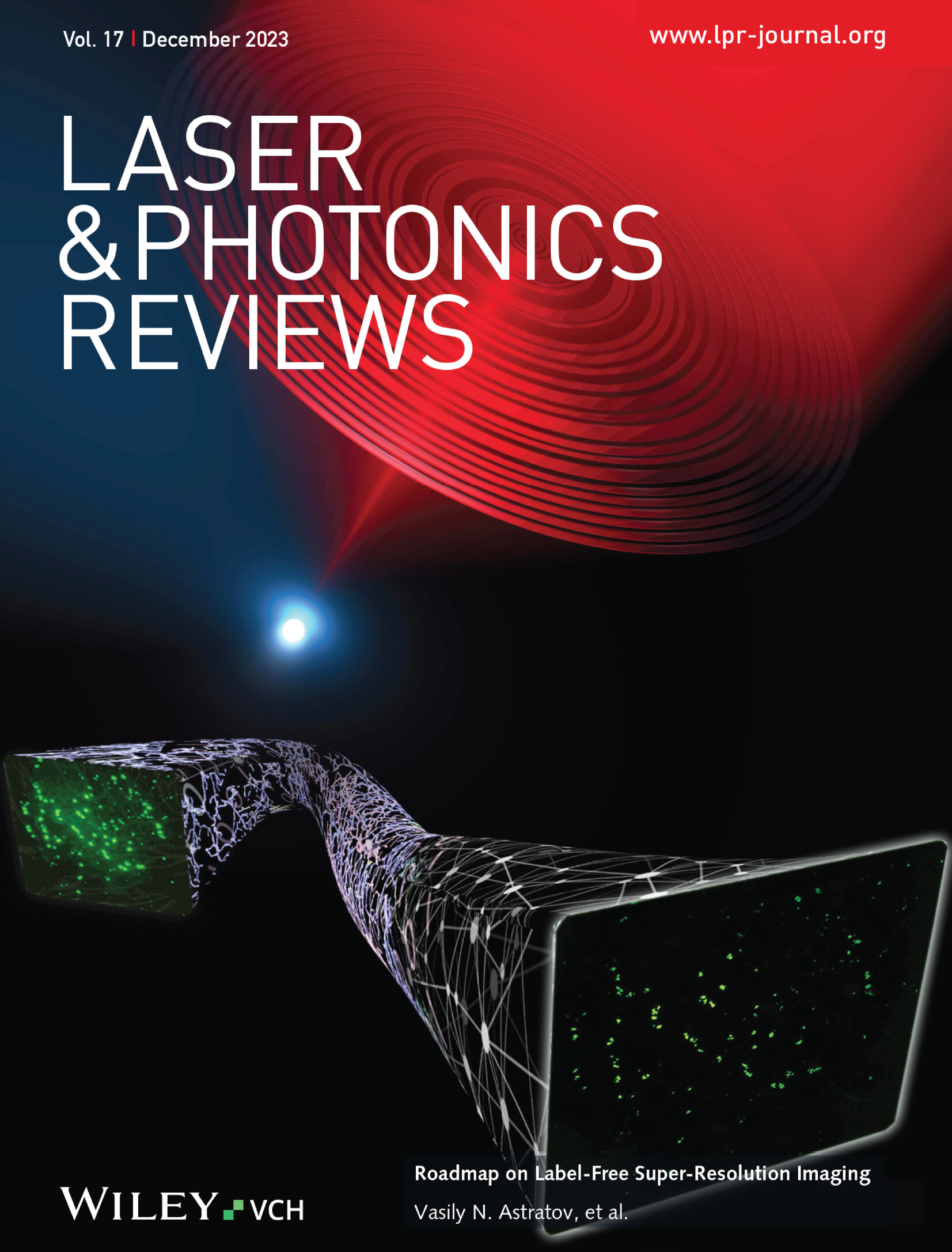具有面外对称破缺的半导体超表面连续体中的隐形准束缚态
IF 9.8
1区 物理与天体物理
Q1 OPTICS
引用次数: 0
摘要
连续统中的束缚态(BICs)因其(形式上)无限的Q因子而在纳米光子学中引起了广泛的关注,准BICs (qBICs)是对称破缺的版本,允许以有限(但很大)的Q因子为代价进行进出耦合。在这里,我们证明了在Si倾斜的纳米盘超表面中,由于这些元原子的面内和面外偶极共振的光谱重叠,在光学域中出现了暗的和不对称的qbic,类似于在倾斜角度产生的单磁共振倾斜微盘的微波区中所谓的Brewster qbic。利用耦合偶极子模型,研究表明,由于面内和面外偶极共振的杂化,倾斜纳米盘在修正的布鲁斯特角下发生光学暗qBICs,而布鲁斯特角与纳米盘倾斜角之间存在显著差异。当光入射时,qBIC激发被禁止,超表面是透明的;因为,与直觉相反,qBIC确实被激发了,但超表面仍然是完全透明的,因此这种qBIC激发被掩盖了。数值计算证实了这些qBIC的不对称特性,表明被遮蔽的qBIC在很大程度上增强了近场,并且只有在纳米片中存在吸收损失时才会出现消光。最后,提出了一种实用的、适合制造的、支持隐形量子集成电路的元表面设计。与这种隐形qBIC相关的丰富现象使它们非常适合调谐或切换纳米光学器件(在可忽略反射的开/关qBIC状态之间),为在纳米尺度上增强光-物质相互作用提供了有前途的应用。本文章由计算机程序翻译,如有差异,请以英文原文为准。
Cloaked Quasi Bound States in the Continuum in Semiconductor Metasurfaces with Out‐of‐Plane Symmetry Breaking
Bound states in the continuum (BICs) have attracted much attention in Nanophotonics for their (formally) infinite Q factors, quasi‐BICs (qBICs) being the symmetry‐broken version allowing for in‐ and out‐coupling at the expense of finite (but large) Q factors. Here, it is demonstrated that dark and asymmetric qBICs arise in the optical domain in Si tilted nanodisk metasurfaces, due to the spectral overlap of in‐plane and out‐of‐plane dipolar resonances in these meta‐atoms, similar to so called Brewster qBICs in the microwave regime for single‐magnetic‐resonance, tilted microdisks, arising at the tilt angle. Using a coupled dipole model, it is shown that optical dark qBICs occur for tilted nanodisks at modified Brewster angles that can differ significantly from the nanodisk tilt angles, , due to the hybridization of in‐plane and out‐of‐plane dipolar resonances. If light is incident at , qBIC excitation is forbidden and the metasurface is transparent; counterintuitively, for , the qBIC is indeed excited but the metasurface remains also fully transparent, so that such qBIC excitation is cloaked. Numerical calculations confirm the asymmetric character of these qBICs, demonstrating that the cloaked qBIC largely enhances near‐fields and emerges in the extinction only when absorptive losses are present in the nanodisks. Finally, a practical metasurface design is proposed, amenable to fabrication, supporting cloaked qBICs. The rich phenomena associated with such cloaked qBICs make them highly suitable for tuning or switching nano‐optical devices (between on/off qBIC states with negligible reflection), offering promising applications for enhanced light–matter interactions at the nanoscale.
求助全文
通过发布文献求助,成功后即可免费获取论文全文。
去求助
来源期刊
CiteScore
14.20
自引率
5.50%
发文量
314
审稿时长
2 months
期刊介绍:
Laser & Photonics Reviews is a reputable journal that publishes high-quality Reviews, original Research Articles, and Perspectives in the field of photonics and optics. It covers both theoretical and experimental aspects, including recent groundbreaking research, specific advancements, and innovative applications.
As evidence of its impact and recognition, Laser & Photonics Reviews boasts a remarkable 2022 Impact Factor of 11.0, according to the Journal Citation Reports from Clarivate Analytics (2023). Moreover, it holds impressive rankings in the InCites Journal Citation Reports: in 2021, it was ranked 6th out of 101 in the field of Optics, 15th out of 161 in Applied Physics, and 12th out of 69 in Condensed Matter Physics.
The journal uses the ISSN numbers 1863-8880 for print and 1863-8899 for online publications.

 求助内容:
求助内容: 应助结果提醒方式:
应助结果提醒方式:


